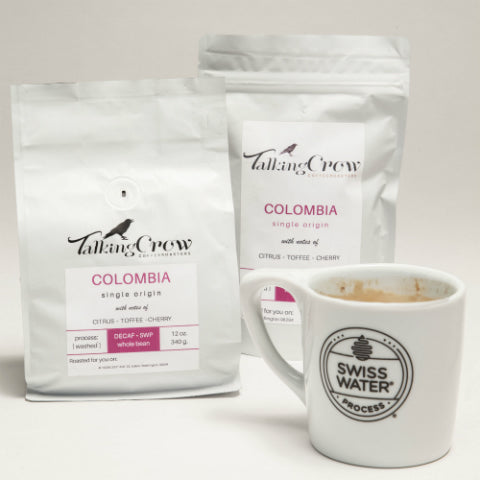Why Colombian?

Why Colombian?
Continuing on in our series of single origin coffees, we are going to focus on another Central American coffee, Colombian - and with that comes a bit of background and another brief history lesson!
Tradition says that in the 16th century Jesuit priests from Europe brought coffee into the country and helped disseminate it by telling the farmers to plant three or four coffee plants after their confession.
Be that as it may, it very quickly became a popular crop in spite of it taking three to five years before bearing enough berries to harvest. Coffee plants thrive in Colombia’s volcanic soil, and in the shade of the indigenous banana and rubber trees.
Coffee exportation began sometime in 1830’s with roughly 2,500 bags of coffee going to the US. By the 1870’s the number was over 150,000. The height of the exportation was somewhere close to 17 million in 1992 and now has leveled out to 11 million, firmly planting Colombia at the world’s third largest coffee exporter. It was only until recently that Brazil and Vietnam surpassed in volume.
Colombia is known for its high quality coffee for a number of reasons. Colombian farmers almost exclusively grow Arabica beans which are of higher quality, although not quite as caffeinated as Robusta beans.
Coffee was originally grown on small farms which worked as a natural quality control, and has carried through until present day. Hand picking only the ripe cherries instead of machine stripping the entire plant with various stages cherry maturity also allows for better quality control. Due to the steep slopes, hand picking is often the only option.
Since the late 1950's "Juan Valdez”, a fictional coffee farmer and successful marketing symbol, became synonymous with high quality Colombian coffee, which contributed to its popularity and catapulted the reputation of exceptional coffee associated with the National Federation of Coffee Growers of Colombia.
The climate of Colombia is perfectly suited for growing coffee with its high elevation of 4,000-6,000 feet above sea level, acidic volcanic soil, and cooler mountain air. All these factors allow for a slow growing crop resulting in more acidic, aromatic, and flavorful cupping profiles. Between 30ºN and 30ºS is known as the coffee zone or “bean belt”. Lying directly on the equator, Colombia is in the bean belt zone and has several different climate regions: the North zone, the Central North/Central South zone, the South zone, and the Eastern zone - all each having its own wet and dry season (some have two) and therefore different harvesting seasons allowing Colombian coffee to be available nearly year-round.
Colombia coffee notes are generally medium bodied and balanced with a rich taste and a citrus like acidity, often a mild fruity flavor.
We like to carry Colombian coffee as a staple offering and have decaf Colombian available in medium and full city roasts.
Written by M.J. Blanchet